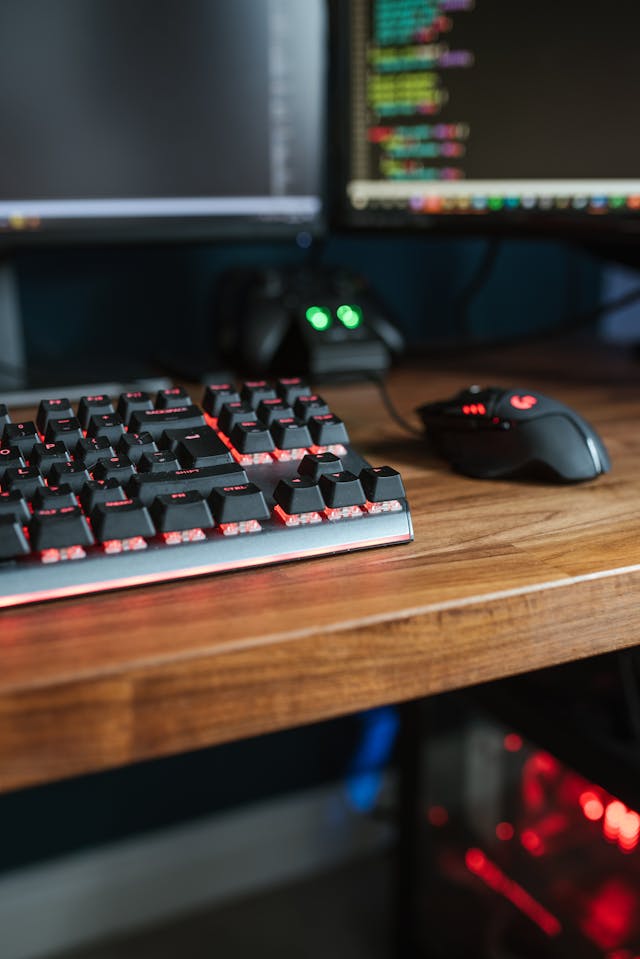Brain Computer Interface
Brain computer interfaces manage brain activity and then send signals to programs that are external which allows users to manage devices through their mind.
Utilizing BCI technology researchers envision the day that patients suffering from muscles atrophy paralysis or different conditions can regain motor function. Rehabilitation programs could use BCIs to speed up the healing process from injury.
Ramses Alcaide CEO of Neurotech focused startup Neurable that develops non invasive brain computer interfaces that take the form of headphones thinks that devices with BCI enhancements are able to become part of the everyday that is accessible to the common person.
“If we can make brain computer interfaces accessible and seamless suitable then they can be integrated into our daily lives just as we use smartphones or laptops today” Alcaide said to Built In. “But in order to truly become ubiquitous tool they need to be comfortable intuitive and reliable suitable that people can use them without consciously thinking about them similar to how we use mouse or keyboard to interact with computer.”
Exuberance over the prospects of BCI is resulting in an growing market and will likely to grow by three times in size from $2 billion by 2023 to $6.2 billion before the close of this decade.
How Do Brain Computer Interfaces Work?
Brain computer interfaces are modelled by the electrophysiology that is the neuronal network of the brain. As we make decision or think about taking choice electrical chemical signals are generated. This happens within our nervous system especially in the spaces between neurons referred to as synapses. They transmit information with each other.
In order to record the brains activity BCIs install electrodes near the conversations. The sensors are able to detect voltages that measure the frequency and intensity that the “spike” as they fire or could occur.

“Its like microphone; but in this case were listening to electrical activity instead of sound” claimed Craig Mermel president and chief product officer of Precision Neuroscience which is an innovative company that is that is developing semi invasive reverse able neural implant. “Were picking up the electrical chatter of the brains neurons communicating with each other.”
The information then gets transferred to local computers and then translated into the process of neural decoding. This is when myriad of machine learning algorithms as well as various other artificial intelligence agent step in and transform the vast amounts of data generated by brain activity into an programmable knowledge of what the brains intentions may be.
Invasive vs. Non Invasive BCIs
Brain computer interfaces can be found in two varieties including invasive and non invasive.
- Invasive BCIs BCIs that are directly linked to the brain tissue of patient and can be incorporated through surgery. Since there are significant dangers associated with surgical procedures in the first place surgically invasive BCIs are better suited for those seeking to heal from severe ailments like paralysis injury as well as neuromuscular diseases.
- Non invasive BCIs:BCIs which involve the wearer of device that has electrical sensors which act as dual connections between persons brain and the machine. They emit weaker signals as they arent directly connected to the brains tissues. Therefore non invasive BCIs will be more suitable for applications like playing virtual games virtual reality and for guiding robotics actions and technologies.
Applications of Brain Computer Interfaces
“The near term goal [of brain computer interfaces] is to give the abilities back to those who have lost them” explained Sumner Norman scientist working for non profit company Convergent Research and the former head of the brain computer interface department for software company AE Studio. “But in the long term this tech is also intended to create kind of tertiary cortex or another level of the human brain function and an executive function that would allow us to be almost superhuman.”
Here are few of the most common uses for brain computer interfaces.
Robotic Limbs and Wheelchairs
Through the provision of live neural feedback loop which rewires neurons in the brain BCIs can assist in returning mobility movement as well as autonomy to paralyzed or disabled people enhancing the quality of their lives. In cases of chronic illness robotic devices as well as limbs are joined.
Wireless Headsets
The use of headsets is to provide non invasive method of brain computer interfaces. Certain increase efficiency and improve the focus such as in Neurables Enten system & others bring back motor capabilities for an individuals upper extremities after an injury like the IpsiHand technology from Neurolutions Inc.
Spellers
Individuals who cannot speak & are “locked in” state following trauma or severe stroke and can utilize eye movements to facilitate computers enhanced communications.
Smartphone and Smart Home Device Interface
In many research studies in variety of studies people have been able to manage social media apps including email administration as well as virtual assistants. messaging services without motor abilities. The dimming of the lights and changing the channel on TV is an example of BCIs that can be used in homes.

Drones
The Department of Defense has invested in research into the development of non hands free drones that can be used for military purposes. The idea is to allow soldiers remotely control several drones that are not piloted.
Examples of Brain Computer Interfaces
Neuralinks Coin Sized Brainchip
The company Neuralink founded by Elon Musk has come up with an implant like size thats the same as coin. To monitor the brains activity as close as it is feasible Neuralinks implant known as the Link is based on micron sized electrodes which spread out to the brain. The main goal is the treatment of symptoms of paralysis. The company has implanted its device in one patient & is planning to accept an additional patient.
Neurables BCI Enhanced Headphones
Neurable creates headphones that can interpret brain signals in order to improve productivity. Its initial pair Enten utilizes advanced analytics of data and algorithms for processing to enhance your focus time throughout the entire day. Its neuro MW75 is based on Enten with similar BCI capabilities as well as enhanced security secure encryption of data as well as an app for mobile devices which allows users to study data driven information.
Precision Neurosciences Electrode Packed Film
Precision Neuroscience is new approach to computer based brain interfaces using the surgically implanted brainchip that isnt invasive @ all and reverse able. The layer 7 cortical interface an extremely thin layer of micro electrodes that are as large like one fifth the thickness of hair in human which is able to conform to the cortex of the brain beneath the skull & does not harm any tissues. In June 2023 Precision carried out an human clinical trial of the neural implant. The company has since increased its studies by including research in Penn Medicine as well as Mount Sinai Health System.
Synchrons Endovascular Alloy Chip
Synchron can map the brain through blood vessels. Injecting the vein through the jugular the Stentrode is implanted in the superior sagittal sinus close to the brains motor cortex. The 8 millimeter long flexible alloy chip sends signals from the brain to receiver placed in the chest of the patient that then transforms thoughts into keystrokes clicks and clicks using laptop or mobile device in real time. Synchron is preparing to begin clinical tests and is collaborated together with OpenAI in order to benefit people who are paralyzed respond to chat and text messages.
Blackrock Neurotechs Mesh Lace
Blackrock Neurotech is been testing its technology with humans since 2004 within its 20 years of computer brain interface development. The Blackrock range of products has enabled patients to recover their tactile functions the movement of their own bodies and prosthetics as well as the capability to operate digital devices solely through thoughts. The companys most recent project Neuralace which is pliable hexagonal mesh made to be perfect fit to the sulci and fissures in the brain. The large area of the patch is capable of capturing 10000 neural pathways bringing it closer to data capture of the whole brain.
Inbrain Nanoelectronics Graphene Chip
Inbrain Neuroelectronics seeks to benefit restore mobility to patients suffering from impairments. They have developed an graphene implant that not just tracks brain activity but additionally stimulates it. Additionally it transmits higher quality signals than to the traditional metallic chips employed in BCIs. The graphene chips is currently being evaluated with patient in the University of Manchester as part of the procedure for removing brain tumors in the near future it may be utilized for patients suffering from Parkinsons disease.
Benefits of Brain Computer Interfaces
Restore Mobility and Motor Functions
In the course of neurorehabilitation Wearables and brain chips provide patients with the ability to control the exoskeletons as well as robotic limbs. The way to fulfil this is by taking signals directly from the brain. This eliminates the area of the injury or illnesslike damaged spinal cord or muscle movement completely.
Mindwriting for Non Verbal Individuals
Through brain computer interfaces if you think about it youre capable of speaking it. The only thing to consider is how quickly neural decoding software is able to keep up.
The team @ Stanford University found that their brain chip can translate 62 words in minute which is @ the same level as natural conversations. The research featured an unverbal patient suffering from amyotrophic lateral syndrome and had pre programmed language of 125000 terms indicating “a feasible path forward for together intracortical speech brain computer interfaces to restore rapid communication to people with paralysis who can no longer speak.”
Treat Neurological Conditions
A study discovered that patients suffering from ALS or cerebral palsy the brainstem spinal cord injury muscular dystrophies as well as chronic peripheral neuropathies might be benefited by BCIs. Neurological implants could be used to alleviate conditions or @ the very least rise the health of patients suffering from terminal or chronic illnesses.
Monitor Mental Health
Brain computer interfaces could in the near future be able help with psychiatric issues including bipolar disorder obsessive compulsive disorder depression and anxiety. Utilizing neurofeedback methods could benefit avoid more common maladies such as fatigue and burnout through the delivery of targeted electric stimulation to particular regions within the brain.
“It may not look as flashy because someone in the demo just looks little bit happier” explained Norman who is researcher is @ the California Institute of Technology as postdoctoral research fellow is focused on the new generation of brain computer interface technology. “But if you were offered solution where I said together single device I can treat any form of anxiety that you have & also offer you sleep on demand and one hundred other applications that could make your life little better than it was I do think that quite few people would adopt that technology.”
Cognitive Enhancement
The brain of user can be trained in terms of memory executive function & performance speed in response to the biofeedback received through neuroimplant with real time data. Much like the wearable technology and applications that are available the users will be able keep track of their progress and regulate themselves in accordance with their needs.
Understanding the Brain
Though the human brain is still an unanswered question BCIs are providing direct link for our brains and an algorithm to benefit us decode its code.
“If I gift you tennis equipment and you play with it and you rise youll become more proficient @ tennis. Similar to that if I offer you computer based brain interface and you work with it and you improve in together the interface of your brain” said Byron Yu Professor of computer and electrical engineering as well as biomedical engineering @ Carnegie Mellon University. “We will then investigate what happens to the brain when youre learning to utilize the device. These findings could provide methods to benefit individuals learn basic knowledge faster and @ greater proficiency.”
Challenges of Brain Computer Interfaces
Brain computer interfaces boast over half century of studies and numerous proofs of theories that have were able to pass human tests. Whats holding them back? Two of the biggest obstacles that prevent BCIs out of widespread use are the approval of regulators and financing.

Regulatory Approval
Since brain computer interfaces are recognized as medicine device that falls within the purview of the FDA. No matter what the technology it is the primary goal of an institution is safety for patients.
The problem lies because BCIs are currently in category that is their own. These devices provide wide range of implantable material fields critical software for safety and technology like the Internet of Things and medical wearable devices to just handful. They arent yet standardized. The predicate device is not yet standardized.
“These are new categories of devices” Precision Neurosciences Mermel explained. “So until theres device that gets cleared for market by the FDA its an open question of what type of evidence you have to show to demonstrate that the benefit of device outweighs the risk.”
Cost and Reimbursement
When brain computer interfaces are introduced into medical practice then who will cover the cost? For the procedure? How about the health check periodic follow ups maintenance on regular basis and enhancements that will aid in the development of technology?
What happens if the bill is paid by health and insurance firms government subsidy or individuals who pay for it out of their own their own pockets can greatly affect the devices accessibility for the general public & also that in accordance with the socioeconomic standing is eligible for an enhanced tech based high quality of life.
“Its important to prioritize the needs and perspectives of end users especially the most vulnerable such as those with disabilities & consider the potential ethical implications of these technologies” Alcaide stated. “We must assure that these technologies do not perpetuate social biases or further exacerbate existing inequalities.”
